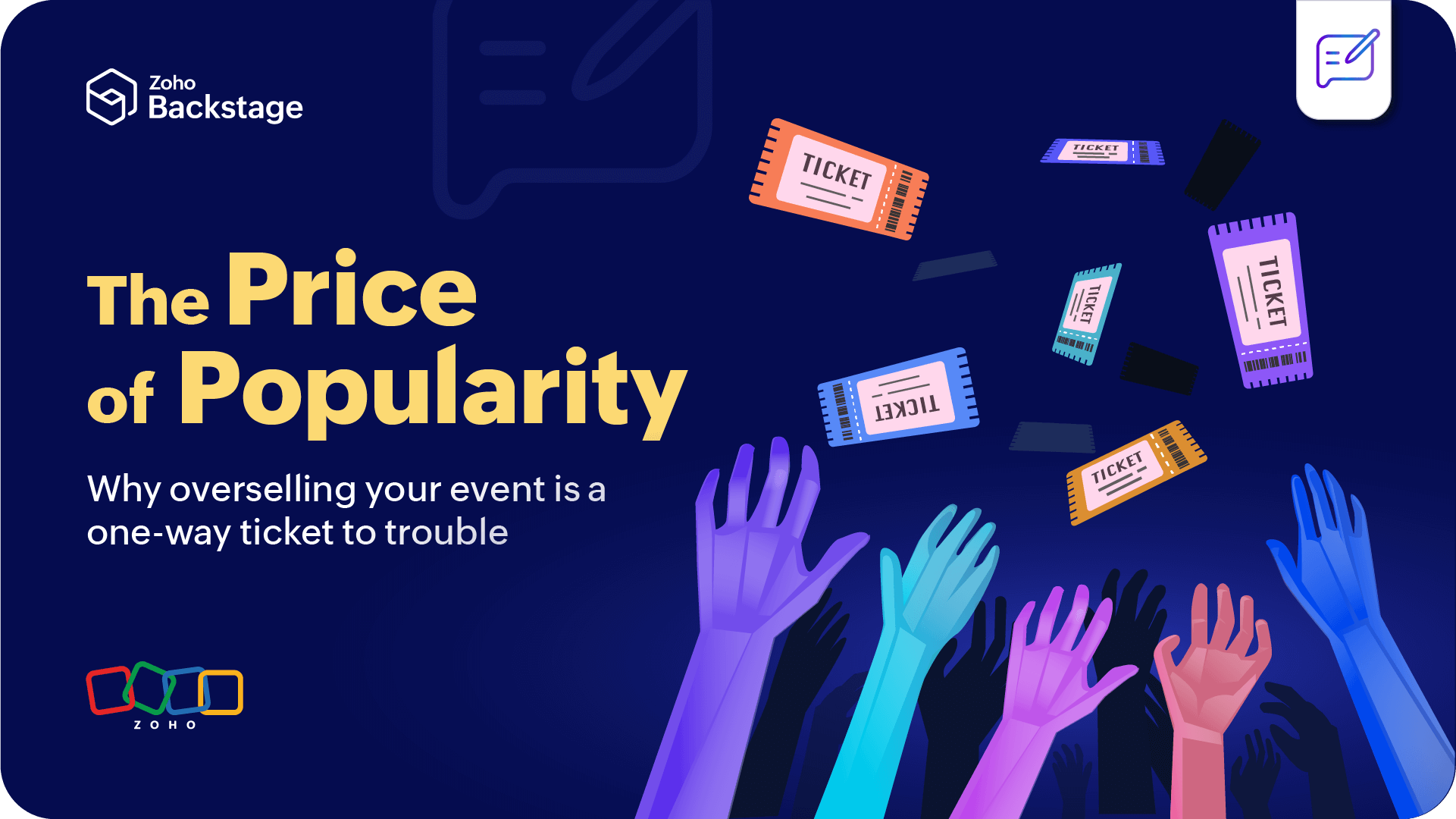Planning an introvert-friendly event: 10 tips for event organizers
- Last Updated : August 18, 2023
- 2.4K Views
- 8 Min Read

In the 1920s, Carl Jung devised the term introvert to describe people who drew energy from within, doing their best work when alone. Today, it's a cornerstone of a lot of personality tests (the Myers-Briggs, for one). While we can't categorize people as completely introverted (or completely extroverted), they usually tend to lean towards one of the traits. For event planners, this poses a new challenge—hosting an introvert-friendly event that allows even the most introverted people to feel comfortable and included.
Introversion and Shyness – The Difference
It's easy to confuse an introvert for a shy person as they're pretty similar on a surface level. They're both people who struggle with social interaction, especially when said interaction happens in large groups. However, there is a key difference between the two—where introverted people prefer to spend their time alone or with a close-knit group, shy people might like to be a part of larger communities. Something—usually fear, anxiety, or insecurity—stops them from approaching people. Once they overcome that one problem, they'll become more comfortable with social interactions.
Introverts, on the other hand, will always prefer to be by themselves. The difference here is choice. Shy people want to but they're unable to. Introverts plain don't want to. One is fear, the other is a lack of interest. The good news, though, is that most practices that you incorporate in your event strategy to make introverted people comfortable will also benefit shy people.
Subscribe to The Green Room
Sign up here and get all the most relevant MICE industry content delivered right to your inbox once a month.
By submitting this form, you agree to the processing of personal data according to our Privacy policy.
How to create an event that makes introverts feel welcome
Meeting new people and making connections is an integral part of events. You could even say that's the sole reason most people (including the introverted and shy ones) attend events. This need to connect is, for the most part, unfulfilled for introverted people. They are, by parts, unsatisfied, overwhelmed, and maybe even drained from the pressure of constant interaction, not to mention the anxiety of being the first one to break the ice.
To make your event a satisfying experience for introverts, you should plan it in such a way that they are comfortable to interact while, at the same time, they have enough personal space and options to take a break and restore their energy. Here are 10 tips we hope will help you put together an event strategy that allows your introverted attendees to have a good time.
Make session interaction inclusive
For the most part, your event is a series of sessions. They may be keynotes, presentations, panels, or anything else, but they all have at least one portion that requires active participation from attendees. It might be something as simple as Q&A time or more involved that requires attendees to take part in the conversation on stage. So it's important to make your sessions a place where introverts don't feel unnerved or out of place.
This is especially true with unconferences or semi-structured sessions where at least half the session is audience participation. We've also got a lot of different session types now—birds of a feather, campfire, fireside chat, fishbowl, soapbox—and while they all sound cool, attendees don't know what to expect. By telling your attendees beforehand what a session will be like, they can prepare themselves for it. Other things you can do to keep your introverted attendees comfortable are:
Allowing them to submit their questions through the event app or social platform
Letting them know beforehand about group discussions so they can mentally prepare
Providing a notepad and pen so they can organize their thoughts in order before the session
Offering alternatives to breakout rooms and other people-focused activities
Building some quiet time into the session so attendees can reflect on the discussion
Rethink networking
The thing is introverts like socializing provided they can do it at their own pace and in a smaller group. They'd also like to do it in a quiet place that's less noisy and stimulating. This means putting everyone into one large hall will not work. Neither will popular icebreaker games like speed-networking. They don't want to talk for two minutes and exchange business cards. They prefer the connection that comes with longer conversations.
Small talk won't do either. Not only do they hate it, but they're also unsure how to go about it. What can work is you giving them conversation starters with quizzes or bingo. A few board games, maybe something like Connect 4, can also be a fun way to break the ice.
Help them navigate the lunchroom
Lunchrooms can be very lonely places despite the crowd. That saying "lonely in a sea of people" would be perfect to describe them. The reason for this is the age-old problem of where to sit and whom to sit with, especially if someone is a solo attendee.
Some ways you can make your lunchroom less intimidating and lunchtime more enjoyable are:
Assigned seating: By giving everyone a designated place to sit, you can ensure that no one is left out. The seating can be random or based on common factors like industry, location, or more.
Birds of a feather: This is a session type that works well for breakfast and lunch. Here, people gather informally to discuss a pre-planned agenda. You can group attendees based on the topic they're most interested in.
Solo spaces: Have a few solo tables with crosswords or event trivia so introverts can get their alone time and recharge during the lunch hour.
You can make lunchtime as exciting and inviting as the rest of your event. All it takes is some creativity and a team that's willing to go the extra mile.
Include longer breaks
Moving from session to session and navigating the event venue while at the same time networking with fellow attendees can be very taxing for introverts. Especially as most of them agree they prefer not to ask for help. They'd rather do it themselves. So it might be a little too much for them to manage everything.
By allowing for longer breaks, you essentially give them three benefits—they can prioritize better, spend some time recharging, and gather their thoughts. They also get to really get into the conversation by putting their listening skills to use. Finally, it gives them the leeway to make their own plans, like scheduling a one-on-one meeting with a peer.
Add more event activities than just socializing
Don't make every activity about networking. Most gamification strategies are very focused on extrinsic rewards and making connections. Sadly, they're of little interest to introverts who'd rather make conversation with one person over a topic they really like than 10 people just to tick off boxes on their networking bingo card. Rather, use the bingo card to have activities that are an equal mixture or learning and networking.
Have wellness activities like a yoga session or a mindfulness break to help them relax. Wellness activities are one of the most popular trends today, and your extroverted attendees will enjoy them. You can also have educational workshops where people don't have to be pressured to network.
Create places to unwind
With all the noise and energy, an event can be very overwhelming for people who are used to quiet places. By creating small, intimate areas throughout the venue, you can give them the much-needed space to sit down, relax, and process everything that happened. You can also leave a few notepads for them to either sketch or journal. Power outlets would be an added bonus here. They can recharge their brains and their phones.
If you really want to take this idea and run, make it a Zen den of sorts with a soundproofed room, comfortable couches, aroma oils, and soothing sounds. It would be the perfect place to let go of all the stress and excitement and calm themselves before returning into the chaos.
Leverage tags
Almost every in-person event has badges for event participants. You can use these badges to help attendees connect. Get them to add their interests on their badges so others know what they want. This also reduces the pressure of making the first move. You already know what to talk about and so you can get right into the conversation without any of that dreaded small talk.
If you're hosting a virtual event, get attendees to fill their profiles and add a few tags to it. People can then network based on common interests.
Break the ice online
An easy way to take the pressure off attendees at the event is by giving them facilities to network before it begins. So on the event day, everyone knows at least one person. We also know it's easier to interact online than in-person. You can do this in two ways: social platforms and the event app.
Create discussion channels on your event app so attendees can discuss relevant topics and start making connections. Use your social accounts to do quizzes, challenges, and giveaways. You can also go live and interact with attendees or start twitter threads where people can give their opinion on a topic.
Introduce people with common interests
A lot of event apps nowadays come with a matchmaking service. All you have to do is get attendees to complete their user profile on the event app. The app's AI will do the rest of the work by matching people with similar interests or based on a particular criteria like location.
You can either send them a list of similar people they can meet with at the event or get them to use the feature to find interesting people. A lot of these apps also come with an option to let attendees schedule 1:1 meetings with people who've accepted their request to network. This is another way to reduce small talk and help attendees make the best of the networking opportunities available at your event.
Tell attendees what to expect
Prepare your attendees by letting them know what your event is about and what they can get from it. Give them a detailed explanation of your agenda from the keynote to the afterparty so they don't feel out of their element at the event. Other things you can include are your event's code of conduct, places to visit and cafes nearby (especially if it's a multi-day event), and event dress-code-related information.
You must also have proper signage and even a map of the event venue so they can navigate the event space and get to sessions on time. Tell them about the quiet spaces you've included in the event venue and other introvert-friendly event activities you have in store for them. All of this is done to show them you have kept their needs in mind when designing your event. Not only will your existing attendees feel more appreciated, this will also encourage prospects to attend the event.
Finally, it's not that introverts don't like events. They like it as much as their extroverted counterparts, but sometimes it just gets exhausting. By creating an introvert-friendly event environment, you give them an equal chance to make the most of it without draining their energy levels.
If, like us, you're more of a social person, let's connect on Twitter (@ZohoBackstage) and we'll keep you up-to-date with all the latest event news.
 Nisha
NishaMarketing and content at Zoho Backstage. Cultural misfit. Armchair traveler. Productivity geek. Sometimes, I write poetry. Sometimes, it rhymes.








